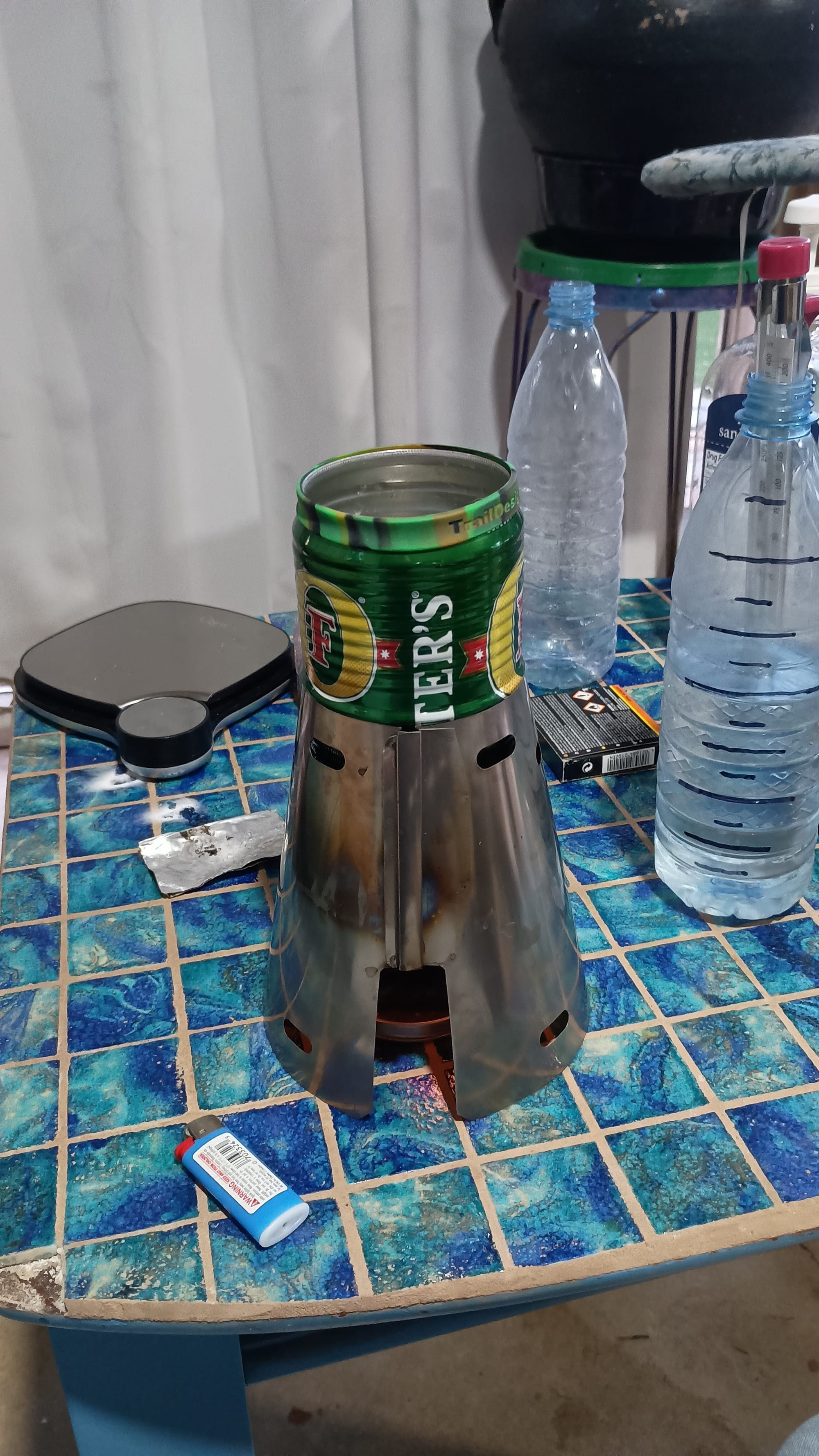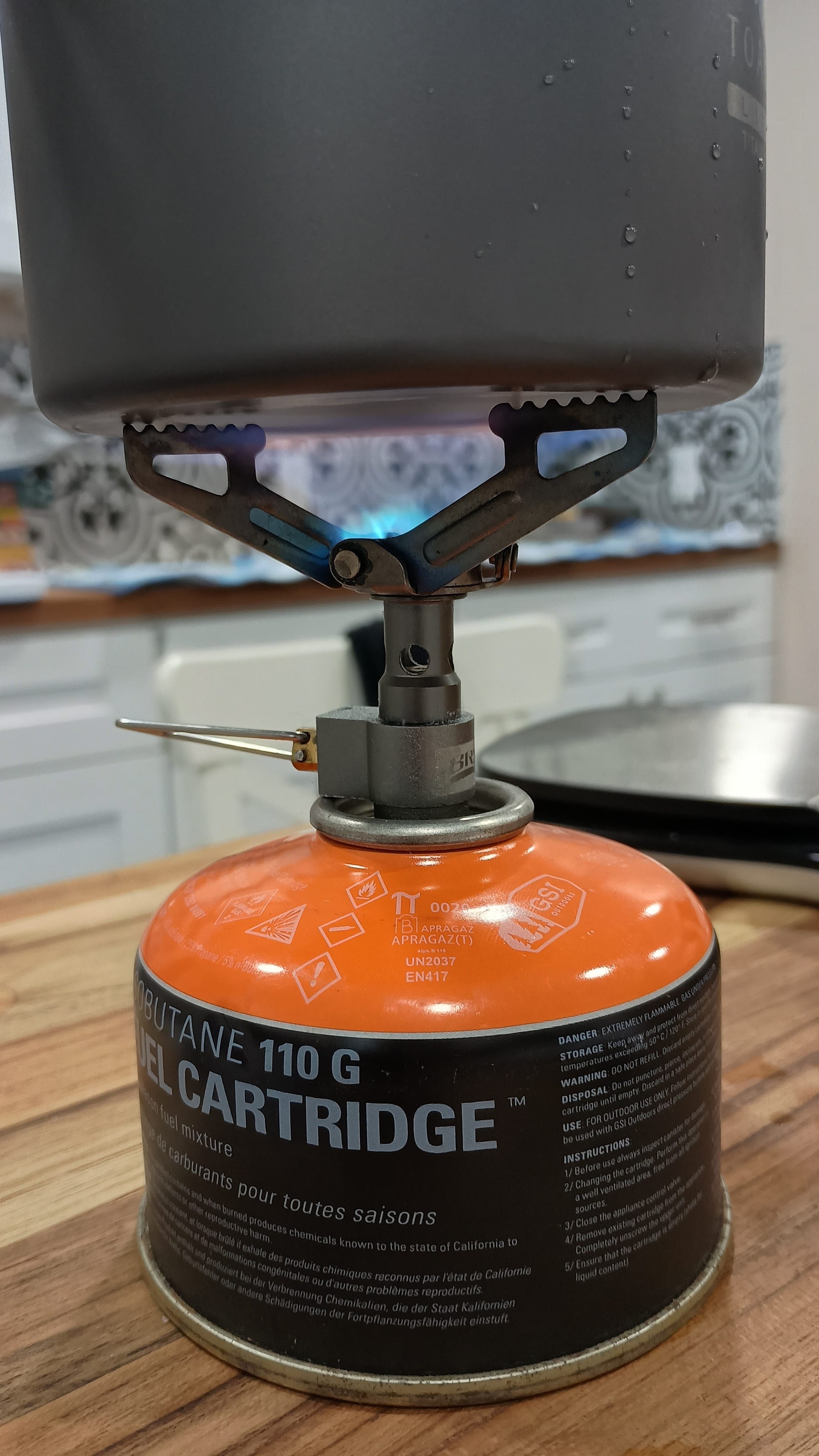Caldera Keg Efficiency

Esbit stoves have long been known to be the most efficient in terms of weight. While they come with other drawbacks (smell, soot, slow, impacted heavily by wind, and often banned as a source of open flame) the stove weight can be as low as a couple grams. And fuel consumption per cup of water boiled can be in the area of 5 grams or less. Of course a windscreen of some sort is generally required, and that adds some weight. While a resourceful ultralighter could repurpose gear they're already carrying or set the stove up strategically to take advantage of natural wind breaks in order to omit the need to bring a dedicated windscreen, less fidgety solutions including a windscreen can be had for 100 - 150 grams for the entire cook system: stove, windscreen, pot, and necessary accessories. The Caldera Keg setup in particular has been touted by its maker, Trail Designs, to be super efficient as the windscreen both serves to hold the pot at the correct height above the stove and funnel heat normally wasted around the pot to the pot's sides.
One of the things I like the most about Esbit stoves is the ability to minimize the amount of unnecessary fuel weight carried. You can literally count out the number of Esbit cubes you need and only bring that amount. In preparation for an upcoming trip, I conducted a fuel consumption study to quantify the relationship between Esbit fuel consumed, water volume, and desired temperature rise using the Caldera Keg such that I could then calculate fuel needs for the trip. For this study I heated 6 combinations of water volume and fuel quantity and recorded the temperature rise it generated.

I multiplied the water volume times the observed temperature delta to approximate the caloric output for input quantities of Esbit, and plotted this data:

The linear regression line yielded an R-squared value of 99.64%, suggesting the resultant equation was a very strong capture of the correlation. The water volume*temperature rise equals 28.8 times the grams of Esbit minus 2.8.
This equation can be reversed/solved for through Algebra to calculate the amount of fuel required for volume/temp rise combinations. For example, if we wanted to make 12 ounces of coffee, with a desired coffee temp of 150F, starting from water at 32 degrees (winter temps), we'd require 6.2 grams of Esbit. Since Esbit come in 4.1 gram cubes, that'd be 1.5 cubes. If the starting water temp were a little warmer (55 degrees) the same 6.2 grams of Esbit would heat the coffee water to 172 vs. 150.)
Another application is the reconstitution of freeze dried meals, like Mountain House. Those meals typically require 1.25 - 1.75 cups of boiling water. If we were starting at 32 degree water, that would require 7.9 to 11 grams of Esbit. Again, since these are 4.1 gram cubes, that'd be 1.9-2.7 of them. For simplicity, I'd round that to 2 or 3 depending on the meal's water requirements. If the starting water were warmer (55 degrees), the Esbit requirement would be 6.5 - 9 grams, or 1.5 to 2.2 cubes, rounded to 1.5 - 2.5 cubes.
Putting this into practice
The meal plan for my Ouachita Trail 2025 trip for 4 days includes 4 freeze dried meals for dinner, 3 freeze dried meals for breakfast, 1 breakfast that doesn't require rehydration, and 8 cups of coffee (each 12 ounces), or 2 per morning. My calculated Esbit requirements are therefore

Adding in the weight of my Caldera Keg system (89.5 grams) yields 208 grams for a cook system and fuel for 4 days.
Canister Stove Comparison
For comparison, my most UL canister stove - a BRS-3000 and a Toaks 550 UL without handles - would weigh

I conducted a fuel consumption study with the valve on the BRS3000 so that the flames didn't extend past the edges of the Toaks 550 as shown in the photo below.

The data was collected following the table below

Which produced the following regression chart:

For the Ouachita Trail trip, the fuel consumption would be

The table presented at the start of this comparison showed a system weight of 288 grams. If we were to substitute in just the fuel actually used it would look like this:

In practicality, nobody is going to cut close to the line and take the minimum amount of fuel (78 grams) in a canister. For one thing, that's too much hassle. For another, an unregulated stove like the BRS will run differently when the canister is near empty, so fuel estimates would be off anyways. For all practical purposes, anyone going with BRS setup on a trip like this would bring either a new or nearly new canister, thus carrying significantly more fuel than required.
Conclusion
The Caldera Keg system would weigh between 48 and 82 grams less than a BRS canister stove system over the 4 day trip. 82 grams is 2.9 ounces, or about the weight of a really good snack.
Keep hiking my friends

